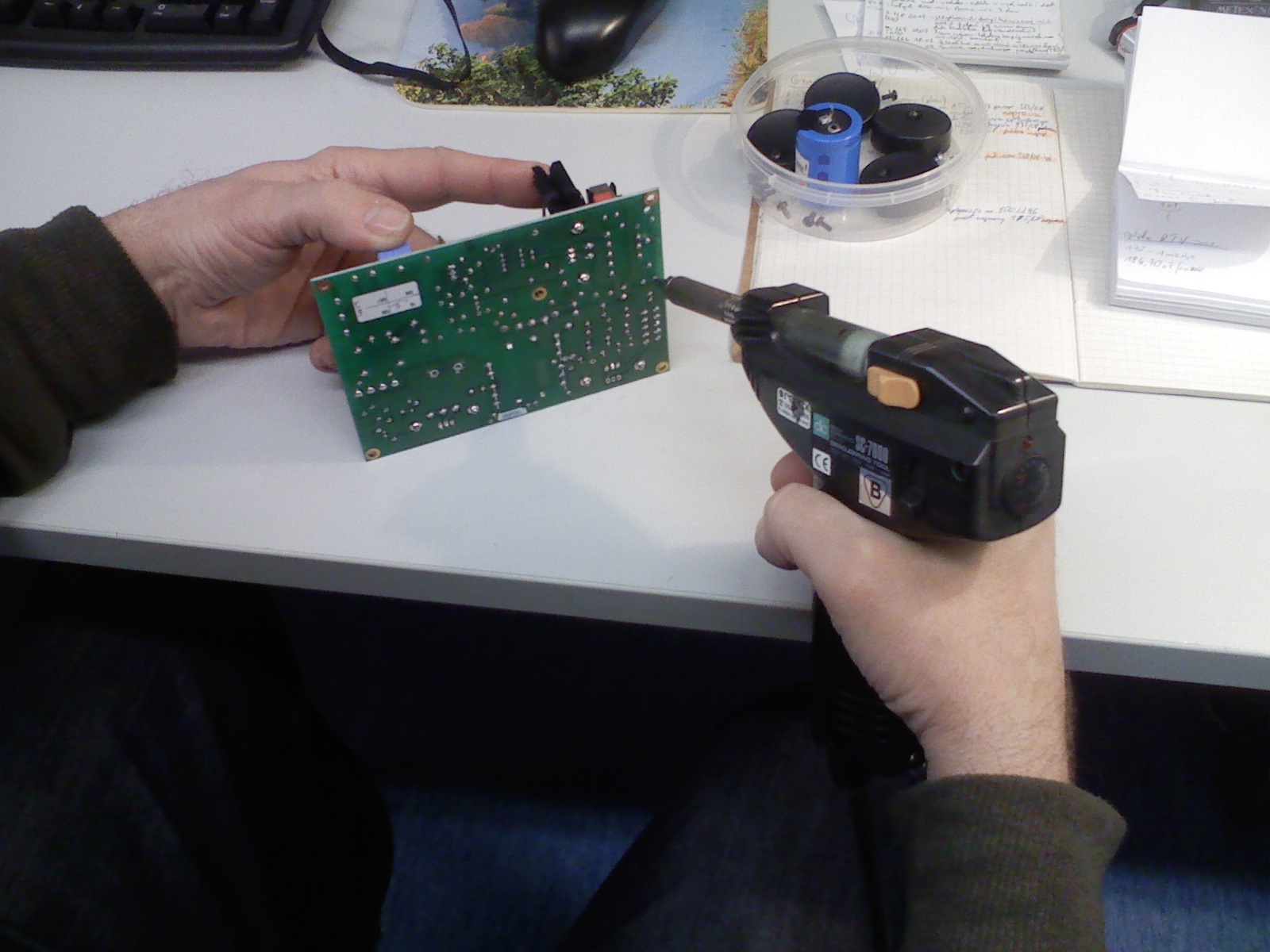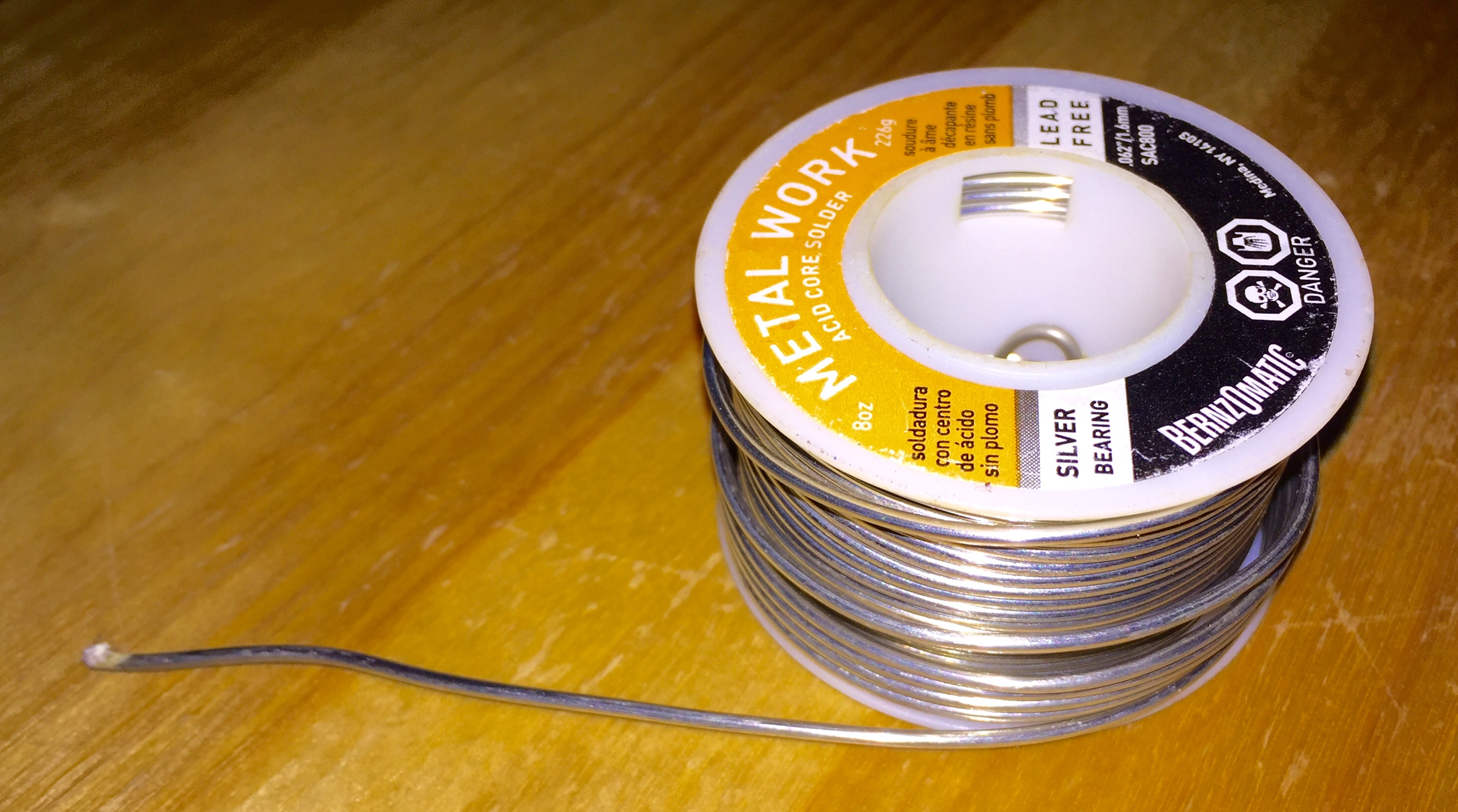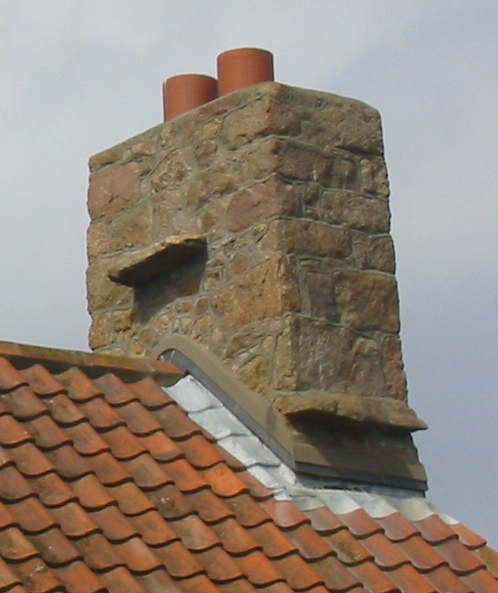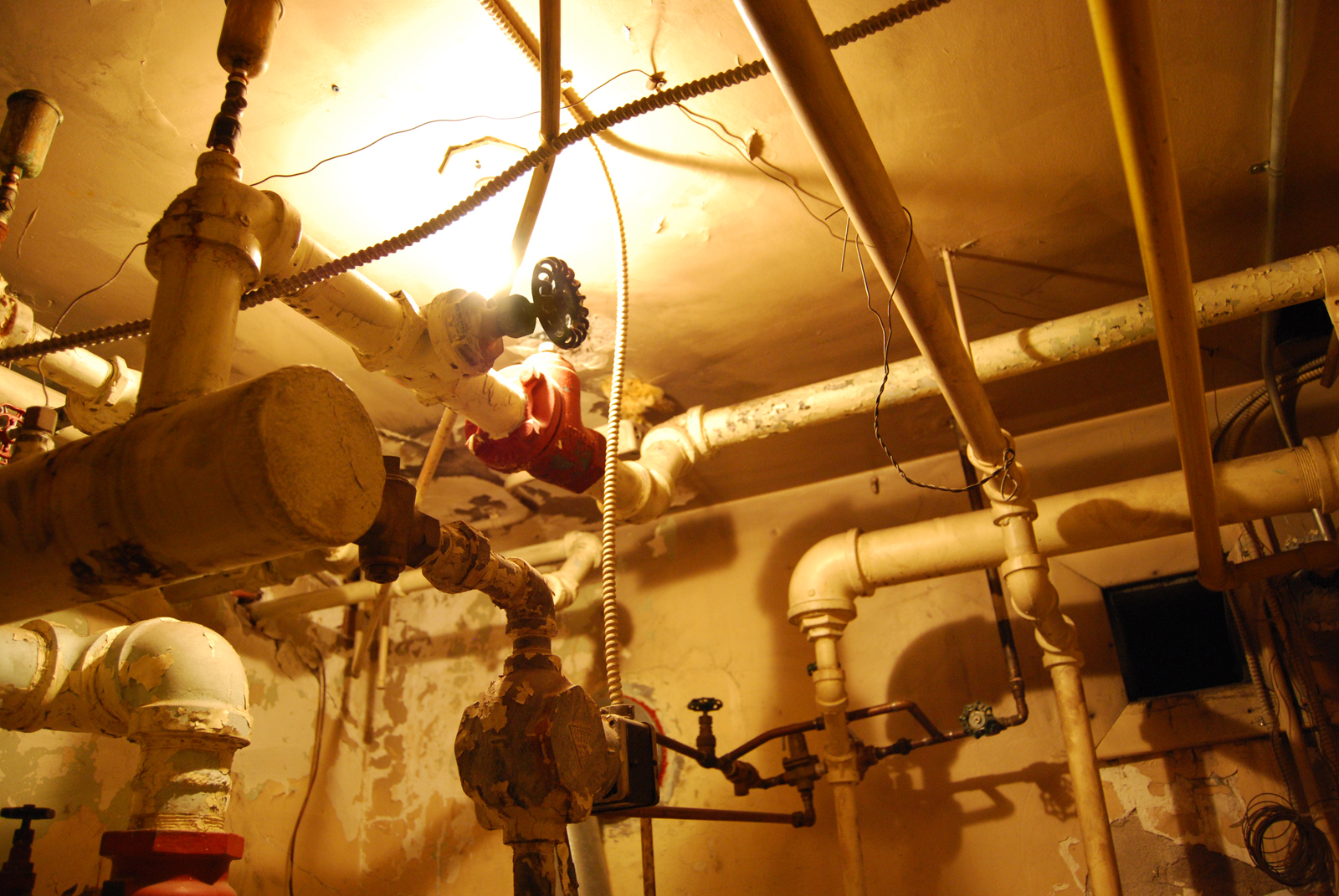|
Soldering
Soldering (; ) is a process in which two or more items are joined by melting and putting a filler metal (solder) into the joint, the filler metal having a lower melting point than the adjoining metal. Unlike welding, soldering does not involve melting the work pieces. In brazing, the work piece metal also does not melt, but the filler metal is one that melts at a higher temperature than in soldering. In the past, nearly all solders contained lead, but environmental and health concerns have increasingly dictated use of lead-free alloys for electronics and plumbing purposes. Origins There is evidence that soldering was employed as early as 5,000 years ago in Mesopotamia. Soldering and brazing are thought to have originated very early in the history of metal-working, probably before 4000 BC. Sumerian swords from were assembled using hard soldering. Soldering was historically used to make jewelry, cookware and cooking tools, assembling stained glass, as well as other uses. ... [...More Info...] [...Related Items...] OR: [Wikipedia] [Google] [Baidu] |
Desoldering
In electronics, desoldering is the removal of solder and components from a circuit board for troubleshooting, repair, replacement, and salvage. Tools Desoldering tools and materials include the following: *Solder wick *Heat guns, also called hot air guns *Desoldering pump *Removal alloys *Removal fluxes *Heated soldering tweezers *Various picks and tweezers for tasks such as pulling at, holding, removing, and scraping components. *Vacuum and pressure pumps with specialized heater tips and nozzles *Rework stations, used to repair printed circuit board assemblies that fail factory test. Terminology is not totally standardised. Anything with a base unit with provision to maintain a stable temperature, pump air in either direction, etc., is often called a "station" (preceded by rework, soldering, desoldering, hot air); one, or sometimes more, tools may be connected to a station, e.g., a rework station may accommodate a soldering iron and hot air head. A soldering iron with a hollow t ... [...More Info...] [...Related Items...] OR: [Wikipedia] [Google] [Baidu] |
Lead-free Solder
Solder (; NA: ) is a fusible metal alloy used to create a permanent bond between metal workpieces. Solder is melted in order to wet the parts of the joint, where it adheres to and connects the pieces after cooling. Metals or alloys suitable for use as solder should have a lower melting point than the pieces to be joined. The solder should also be resistant to oxidative and corrosive effects that would degrade the joint over time. Solder used in making electrical connections also needs to have favorable electrical characteristics. Soft solder typically has a melting point range of , and is commonly used in electronics, plumbing, and sheet metal work. Alloys that melt between are the most commonly used. Soldering performed using alloys with a melting point above is called "hard soldering", "silver soldering", or brazing. In specific proportions, some alloys are eutectic — that is, the alloy's melting point is the lowest possible for a mixture of those components, and co ... [...More Info...] [...Related Items...] OR: [Wikipedia] [Google] [Baidu] |
Solder
Solder (; NA: ) is a fusible metal alloy used to create a permanent bond between metal workpieces. Solder is melted in order to wet the parts of the joint, where it adheres to and connects the pieces after cooling. Metals or alloys suitable for use as solder should have a lower melting point than the pieces to be joined. The solder should also be resistant to oxidative and corrosive effects that would degrade the joint over time. Solder used in making electrical connections also needs to have favorable electrical characteristics. Soft solder typically has a melting point range of , and is commonly used in electronics, plumbing, and sheet metal work. Alloys that melt between are the most commonly used. Soldering performed using alloys with a melting point above is called "hard soldering", "silver soldering", or brazing. In specific proportions, some alloys are eutectic — that is, the alloy's melting point is the lowest possible for a mixture of those components, and co ... [...More Info...] [...Related Items...] OR: [Wikipedia] [Google] [Baidu] |
Solder Sugarlabs
Solder (; NA: ) is a fusible metal alloy used to create a permanent bond between metal workpieces. Solder is melted in order to wet the parts of the joint, where it adheres to and connects the pieces after cooling. Metals or alloys suitable for use as solder should have a lower melting point than the pieces to be joined. The solder should also be resistant to oxidative and corrosive effects that would degrade the joint over time. Solder used in making electrical connections also needs to have favorable electrical characteristics. Soft solder typically has a melting point range of , and is commonly used in electronics, plumbing, and sheet metal work. Alloys that melt between are the most commonly used. Soldering performed using alloys with a melting point above is called "hard soldering", "silver soldering", or brazing. In specific proportions, some alloys are eutectic — that is, the alloy's melting point is the lowest possible for a mixture of those components, and co ... [...More Info...] [...Related Items...] OR: [Wikipedia] [Google] [Baidu] |
Wave Soldering
Wave soldering is a bulk soldering process used for the manufacturing of printed circuit boards. The circuit board is passed over a pan of molten solder in which a pump produces an upwelling of solder that looks like a standing wave. As the circuit board makes contact with this wave, the components become soldered to the board. Wave soldering is used for both through-hole printed circuit assemblies, and surface mount. In the latter case, the components are glued onto the surface of a printed circuit board (PCB) by placement equipment, before being run through the molten solder wave. Wave soldering is mainly used in soldering of through hole components. As through-hole components have been largely replaced by surface mount components, wave soldering has been supplanted by reflow soldering methods in many large-scale electronics applications. However, there is still significant wave soldering where surface-mount technology (SMT) is not suitable (e.g., large power devices and ... [...More Info...] [...Related Items...] OR: [Wikipedia] [Google] [Baidu] |
Printed Circuit Board
A printed circuit board (PCB; also printed wiring board or PWB) is a medium used in Electrical engineering, electrical and electronic engineering to connect electronic components to one another in a controlled manner. It takes the form of a Lamination, laminated sandwich structure of conductive and insulating layers: each of the conductive layers is designed with an artwork pattern of traces, planes and other features (similar to wires on a flat surface) Chemical milling, etched from one or more sheet layers of copper Lamination, laminated onto and/or between sheet layers of a Insulator (electricity), non-conductive substrate. Electrical components may be fixed to conductive pads on the outer layers in the shape designed to accept the component's terminals, generally by means of soldering, to both electrically connect and mechanically fasten them to it. Another manufacturing process adds Via (electronics), vias: plated-through holes that allow interconnections between layers. ... [...More Info...] [...Related Items...] OR: [Wikipedia] [Google] [Baidu] |
Brazing
Brazing is a metal-joining process in which two or more metal items are joined together by melting and flowing a filler metal into the joint, with the filler metal having a lower melting point than the adjoining metal. Brazing differs from welding in that it does not involve melting the work pieces. Brazing differs from soldering through the use of a higher temperature and much more closely fitted parts than when soldering. During the brazing process, the filler metal flows into the gap between close-fitting parts by capillary action. The filler metal is brought slightly above its melting ( liquidus) temperature while protected by a suitable atmosphere, usually a flux. It then flows over the base metal (in a process known as wetting) and is then cooled to join the work pieces together. A major advantage of brazing is the ability to join the same or different metals with considerable strength. Basics High-quality brazed joints require that parts be closely fitted with base m ... [...More Info...] [...Related Items...] OR: [Wikipedia] [Google] [Baidu] |
Came Glasswork
Came glasswork is the process of joining cut pieces of art glass through the use of came strips or foil into picturesque designs in a framework of soldered metal. Final products include a wide range of glasswork, including stained glass and leadlight, lead light pieces. Came is made of different metals, such as lead, zinc, brass and copper. The metal came selected generally depends upon the size, complexity and weight of the project. As an alternative to came, copper foil may be used, for small, intricate pieces. Overview Came glasswork includes assembling pieces of cut and possibly painted Art glass, glass using came sections. The joints where the came meet are soldered to bind the sections. When all of the glass pieces have been put within came and a border put around the entire work, pieces are cemented and supported as needed. The work may be made waterproof by forcing a soft oily cement or Putty, mastic between the glass and the cames. A form of embellishment and gilding, ... [...More Info...] [...Related Items...] OR: [Wikipedia] [Google] [Baidu] |
Filler Metal
A filler metal is a metal added in the making of a joint through welding, brazing, or soldering. Soldering Soldering and brazing processes rely on a filler metal added to the joint to form the junction between the base metal parts. Soft soldering uses a filler that melts at a lower temperature than the workpiece, often a lead-tin solder alloy. Brazing and hard soldering use a higher temperature filler that melts at a temperature which may approach that of the base metal, and which may form a eutectic alloy with the base metal. Filler alloys have a lower melting point than the base metal, so that the joint may be made by bringing the whole assembly up to temperature without everything melting as one. Complex joints, typically for jewelry or live steam boilermaking, may be made in stages, with filler metals of progressively lower melting points used in turn. Early joints are thus not destroyed by heating to the later temperatures. Welding Welding processes work around the meltin ... [...More Info...] [...Related Items...] OR: [Wikipedia] [Google] [Baidu] |
Titanium
Titanium is a chemical element with the symbol Ti and atomic number 22. Found in nature only as an oxide, it can be reduced to produce a lustrous transition metal with a silver color, low density, and high strength, resistant to corrosion in sea water, aqua regia, and chlorine. Titanium was discovered in Cornwall, Great Britain, by William Gregor in 1791 and was named by Martin Heinrich Klaproth after the Titans of Greek mythology. The element occurs within a number of minerals, principally rutile and ilmenite, which are widely distributed in the Earth's crust and lithosphere; it is found in almost all living things, as well as bodies of water, rocks, and soils. The metal is extracted from its principal mineral ores by the Kroll and Hunter processes. The most common compound, titanium dioxide, is a popular photocatalyst and is used in the manufacture of white pigments. Other compounds include titanium tetrachloride (TiCl4), a component of smoke screens and catalysts; and ... [...More Info...] [...Related Items...] OR: [Wikipedia] [Google] [Baidu] |
Flashing (weatherproofing)
Flashing refers to thin pieces of impervious material installed to prevent the passage of water into a structure from a joint or as part of a weather resistant barrier system. In modern buildings, flashing is intended to decrease water penetration at objects such as chimneys, vent pipes, walls, windows and door openings to make buildings more durable and to reduce indoor mold problems. Metal flashing materials include lead, aluminium, copper, stainless steel, zinc alloy, and other materials. Etymology and related terms The origin of the term ''flash'' and ''flashing'' are uncertain, but may come from the Middle English verb ''flasshen'', 'to sprinkle, splash', related to ''flask''. ''Counter-flashing'' (or ''cover flashing'', ''cap flashing'') is a term used when there are two parallel pieces of flashing employed together such as on a chimney, where the counter-flashing is built into the chimney and overlaps a replaceable piece of ''base flashing''. Strips of lead used for flash ... [...More Info...] [...Related Items...] OR: [Wikipedia] [Google] [Baidu] |
Plumbing
Plumbing is any system that conveys fluids for a wide range of applications. Plumbing uses pipes, valves, plumbing fixtures, tanks, and other apparatuses to convey fluids. Heating and cooling (HVAC), waste removal, and potable water delivery are among the most common uses for plumbing, but it is not limited to these applications. The word derives from the Latin for lead, ''plumbum'', as the first effective pipes used in the Roman era were lead pipes. In the developed world, plumbing infrastructure is critical to public health and sanitation. Boilermakers and pipefitters are not plumbers although they work with piping as part of their trade and their work can include some plumbing. History Plumbing originated during ancient civilizations, as they developed public baths and needed to provide potable water and wastewater removal for larger numbers of people. The Mesopotamians introduced the world to clay sewer pipes around 4000 BCE, with the earliest examples found i ... [...More Info...] [...Related Items...] OR: [Wikipedia] [Google] [Baidu] |











